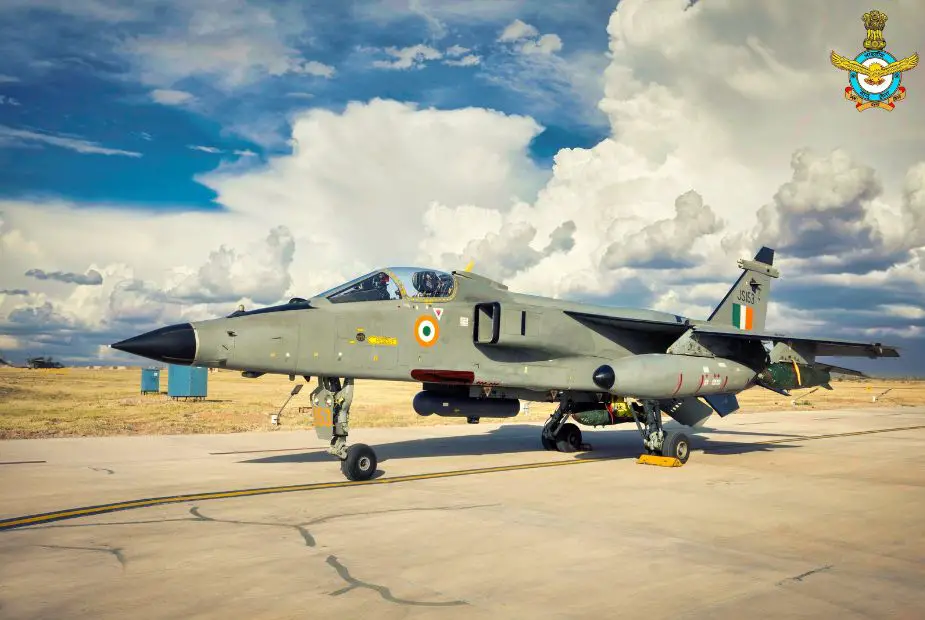Indian Air Force Jaguar fighters modernized with ASRAAM missiles
According to an April 22, 2024, article from the EurAsian Times, the Indian Air Force (IAF) has undertaken a substantial modernization of its Sepecat Jaguar fighter jets, which have been in service since the 1970s, to incorporate new-generation close combat, ASRAAM missiles. These aircraft, the only models still in operation worldwide, have undergone significant upgrades including new attack and navigation avionics.
Follow Army Recognition on Google News at this link

India first purchased the Jaguar in 1979, significantly expanding its fleet over the years (Picture source: Indian Air Force)
As part of this project, the IAF has requested proposals to modify and re-equip two aircraft with next-generation missiles that will be integrated with the new DARIN-III (Display Attack Ranging Inertial Navigation-III) avionics systems and a helmet-mounted display system. This system, known as the Helmet Mounted Display System (HMDS), will enhance the pilot's situational awareness and targeting capabilities by projecting critical flight and targeting information directly onto the pilot’s helmet visor.
The selected missiles for this integration are the Advanced Short Range Air-to-Air Missiles (ASRAAM) from the European company MBDA. These missiles, which will replace the older Matra R550 Magic missiles, feature an infrared guidance system capable of tracking and locking on to a target within line of sight. Weighing 88 kg and with a range of over 25 km, the missile is also designed to allow off-axis firing, a critical capability in visual-range air combat.
The ASRAAM is already in service with the British Royal Air Force as a within-visual range dominance weapon and has been deployed by the Royal Australian Air Force on its F/A-18 Hornets. This missile can receive target information from aircraft sensors, such as radar or helmet-mounted sights, but can also operate as an autonomous infrared search and track system.
Introduced in the early 1970s by Sepecat, a joint venture between British Aerospace and the French firm Breguet, the Jaguar is an Anglo-French jet designed primarily for deep penetration strike capabilities. This twin-engine, ground-attack aircraft was developed to meet the tactical support and nuclear strike roles primarily for the French and British air forces. Known for its robust design, it is capable of high-speed, low-level operations.
India first purchased the Jaguar in 1979, significantly expanding its fleet over the years. Initially, India acquired 40 aircraft from the UK, with additional local production under license by Hindustan Aeronautics Limited (HAL) until 2007. The total acquisition eventually amounted to around 140 Jaguars, but only 125 remain in service. As the only remaining operator of the aircraft, India has adapted the Jaguar fighter-bombers to deliver nuclear gravity bombs, making them an essential component of its nuclear triad.
The comprehensive project will involve studying the existing DARIN-III avionics of the Jaguar, developing technical specifications, modifying existing software, airframe, and wing pylons, conducting ground and flight tests, and achieving final certification. The IAF plans to replace these aircraft with the indigenously produced Light Combat Aircraft (LCA) Tejas Mk-2.
Defense News April 2024
- Hits: 7115
















